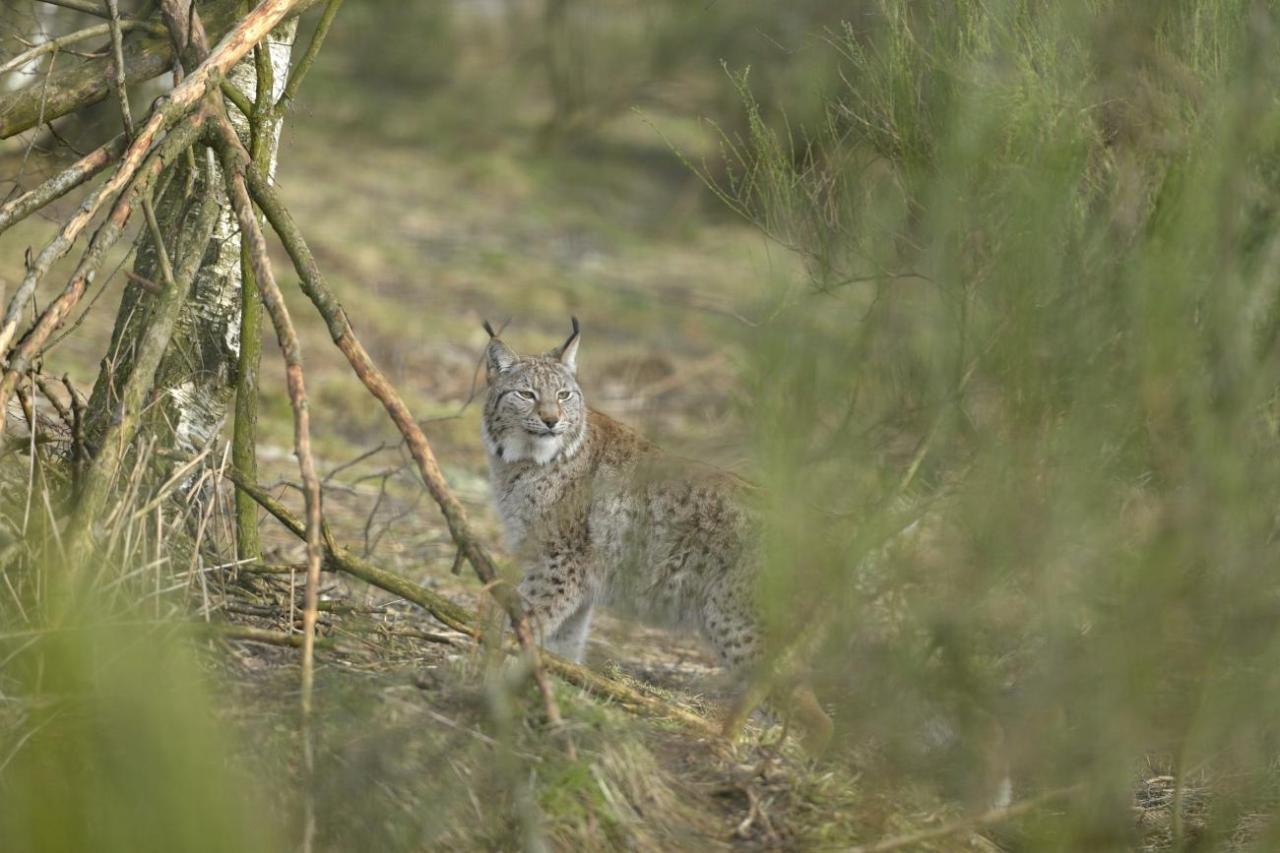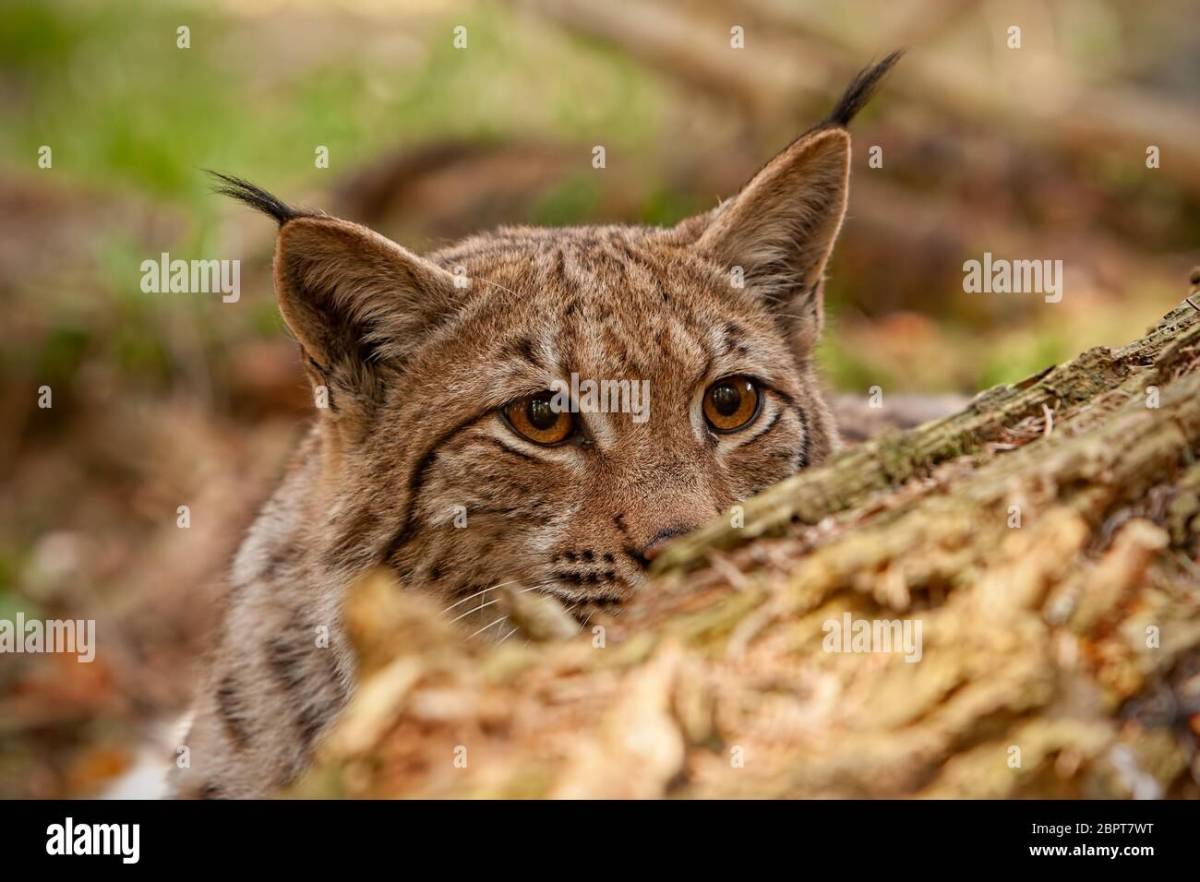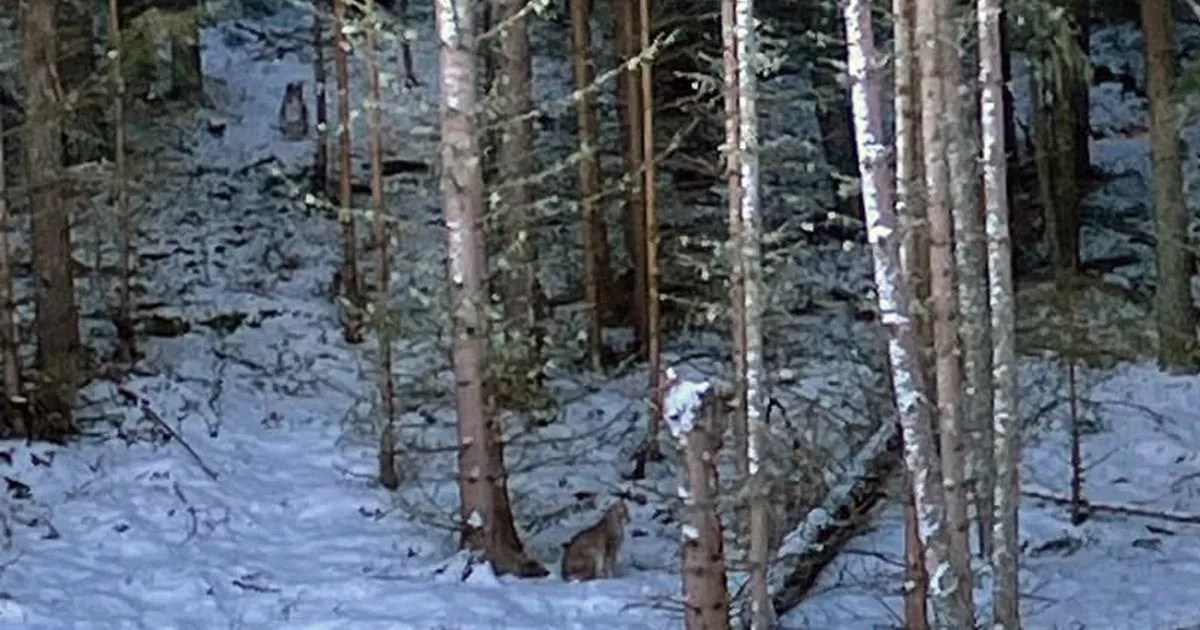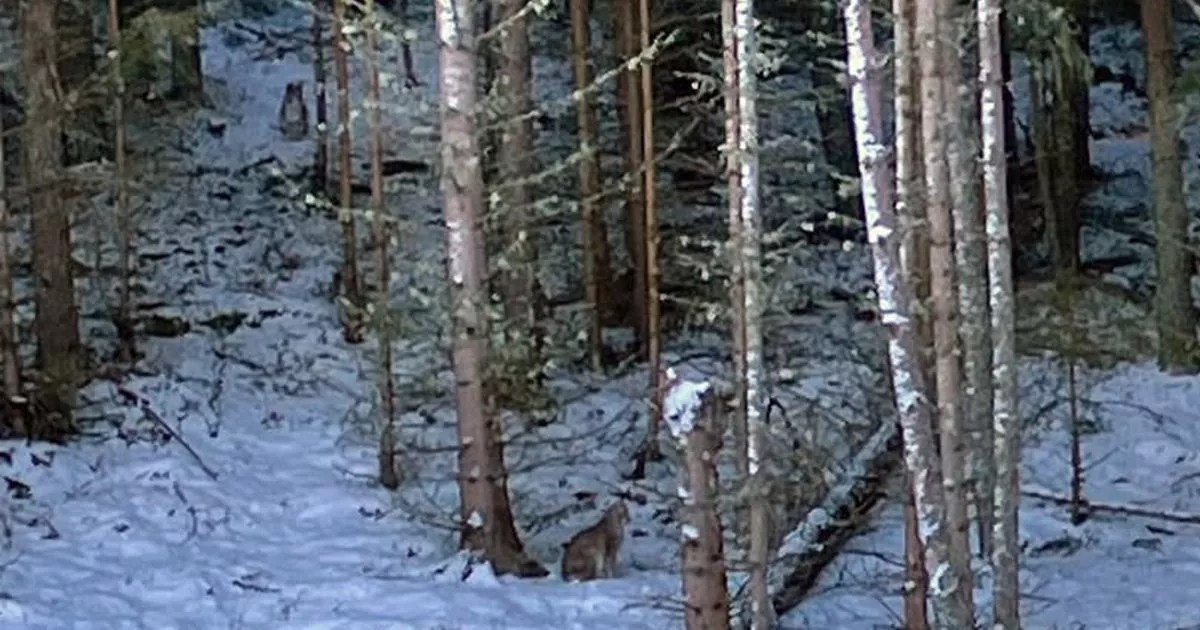Illegally released lynx captured – NatureScot statement – Illegally released lynx captured – NatureScot statement: A wild lynx, illegally released into the Scottish Highlands, has been captured. NatureScot’s swift response highlights the complexities of wildlife conservation and the potential ecological consequences of such actions. This incident raises serious questions about the motivations behind the release, the legal repercussions for those involved, and the ongoing challenges of managing sensitive ecosystems.
This article delves into NatureScot’s official statement, outlining the steps taken to address this situation. We’ll explore the lynx’s origins, the potential environmental impact, and the legal and ethical implications of this illegal release. We’ll also examine public reaction, media coverage, and consider future conservation strategies to prevent similar incidents.
NatureScot’s Response to the Illegal Lynx Release
The illegal release of a lynx in Scotland sparked a swift and decisive response from NatureScot, the Scottish nature agency. Their actions highlight the seriousness of the situation and the potential consequences of such unauthorized introductions.
NatureScot’s Official Statement and Actions
NatureScot’s official statement condemned the illegal release, emphasizing the potential risks to both the native ecosystem and the lynx itself. The statement detailed the agency’s immediate actions, which included deploying a team to locate and capture the animal. They also initiated an investigation to determine the individuals responsible and the circumstances surrounding the release. Further actions included public awareness campaigns to inform the public about the situation and the importance of reporting any sightings.
Potential Environmental Impact of the Released Lynx
The potential environmental impact of the released lynx is a significant concern. Introducing a non-native predator into a delicate ecosystem could have cascading effects on native prey populations, potentially leading to imbalances and even extinctions. Competition with native species for resources is another major concern. The lynx’s presence could disrupt established food webs and create unforeseen ecological consequences.
Timeline of Events
A clear timeline of events is crucial to understanding the response. This would include the date of the reported release, the date of capture, the duration the lynx was at large, and the key actions taken by NatureScot at each stage. For example, a hypothetical timeline might look like this: [Date] – Lynx illegally released; [Date] – NatureScot alerted; [Date] – Capture operation begins; [Date] – Lynx captured.
The Lynx’s Origin and Identity
Determining the lynx’s origin and background is essential for understanding the motivations behind its illegal release and managing potential risks.
Species Identification and Potential Origin

Identifying the exact species of lynx is crucial. Determining its origin – whether it was bred in captivity or sourced from a wild population – would offer valuable insights into the perpetrators’ intentions and the potential for further incidents. Genetic analysis could be used to pinpoint its origins.
Motives Behind the Illegal Release, Illegally released lynx captured – NatureScot statement
Several potential motives could be explored, including a misguided attempt at conservation, a deliberate act of environmental activism, or even an act of malicious intent. Understanding the motivations will help inform future preventative strategies.
The Lynx’s Known History
Investigating the lynx’s history prior to the release, if possible, could shed light on its origins and handling. Was it a rescue animal? Was it part of a breeding program? This information could be crucial in the investigation.
Hypothetical Scenario of the Illegal Release
A plausible scenario could involve individuals gaining access to a captive lynx, potentially from a zoo or breeding facility, and then releasing it into the wild. This could involve planning, transportation, and knowledge of suitable release locations. The perpetrators might have believed they were acting for conservation purposes or for other reasons.
Legal and Ethical Implications
The illegal release of the lynx has significant legal and ethical ramifications.
Legal Ramifications
Those responsible face prosecution under relevant wildlife protection legislation. Penalties could include substantial fines and imprisonment. The severity of the penalties would depend on the specific laws violated and the extent of the environmental damage.
Ethical Considerations
The release of non-native species raises significant ethical concerns. It disregards the principles of biodiversity conservation and the potential harm to existing ecosystems. The action demonstrates a lack of respect for scientific processes and environmental stewardship.
Comparison to Similar Incidents
Comparing this incident to past cases of illegally released animals, such as the release of non-native birds or mammals, provides valuable context. Analyzing the outcomes of those incidents can inform the current response and future preventative measures.
Potential Legal Strategy
A potential legal strategy for prosecuting those responsible might involve gathering evidence from various sources, including witness testimonies, security footage, and genetic analysis of the lynx. Building a strong case requires meticulous investigation and a clear understanding of relevant legislation.
Public Perception and Media Coverage
Media coverage and public reaction significantly shape the narrative surrounding the illegal lynx release.
Media Coverage and Public Reaction
News outlets reported the incident, highlighting the concerns raised by NatureScot and the potential environmental consequences. Public reaction likely ranged from concern and anger to support for the actions taken by NatureScot.
Summary of Public Sentiment

Public sentiment was likely a mix of outrage at the illegal act, concern about the environmental consequences, and support for NatureScot’s efforts to capture the animal. Social media platforms may offer insights into public opinions and discussions.
Impact on Public Trust
The incident could potentially impact public trust in wildlife conservation efforts. Transparency and effective communication by NatureScot are crucial in mitigating any negative effects on public trust.
Media Portrayal of Involved Parties
The media’s portrayal of NatureScot’s response will influence public perception. Positive coverage of their swift and decisive actions would reinforce public trust, while negative coverage could undermine it. The media might also focus on the actions (or inaction) of other involved parties, like potential landowners or witnesses.
So, the illegally released lynx are back in custody, per the NatureScot statement. It’s a bit of a contrast to the chaos in London, where a car was blown up near Regent Street – check out the crazy details here: Car blown up in bomb scare near Regent Street ‘had its phone. Anyway, hopefully, this lynx situation will be resolved more peacefully than that bomb scare.
NatureScot’s investigation continues.
Conservation and Management Strategies
The incident underscores the need for robust conservation and management strategies for lynx populations in Scotland.
Current Conservation Efforts
Current conservation efforts may focus on protecting existing lynx populations in other parts of Europe. These efforts might include habitat preservation, anti-poaching measures, and research into lynx ecology and behavior.
Recommendations for Improvement
Recommendations for improvement could include strengthening regulations surrounding the keeping and handling of lynx, improving security at captive breeding facilities, and enhancing public education programs about the importance of biodiversity conservation.
Challenges of Reintroduction or Management
Reintroducing or managing lynx populations in Scotland presents significant challenges, including securing sufficient habitat, mitigating conflicts with livestock farmers, and addressing public concerns about potential risks to human safety.
Potential Risks and Benefits of Lynx Reintroduction Programs

| Risk | Benefit |
|---|---|
| Impact on native prey populations | Increased biodiversity and ecosystem resilience |
| Conflict with livestock farmers | Potential for ecotourism and economic benefits |
| Public safety concerns | Restoration of a historically present species |
| Disease transmission | Improved ecosystem health and function |
Illustrative Examples of Similar Incidents: Illegally Released Lynx Captured – NatureScot Statement
Examining similar incidents provides valuable insights into the potential consequences of illegally releasing animals.
Similar Case Study
A similar case might involve the illegal release of a non-native bird species in another country, leading to the displacement of native birds and disruption of the local ecosystem. The resulting ecological damage and the cost of remediation efforts could be described.
Environmental Damage Caused by Illegally Released Animal
An example could detail the introduction of an invasive plant species that outcompeted native vegetation, leading to habitat loss and a decline in native animal populations. The economic and ecological costs associated with managing the invasive species could be highlighted.
Long-Term Impacts on Biodiversity
The introduction of a non-native predator could lead to the local extinction of vulnerable prey species, altering the ecosystem’s structure and function for decades. This could lead to a simplification of the food web and reduce overall biodiversity.
Visual Representation of Invasive Species Spread
Imagine a map showing the initial point of release, then progressively expanding circles representing the animal’s range over time, illustrating the exponential spread potential of an invasive species. The map would highlight the increasing area affected as the species expands its territory, potentially impacting native wildlife and habitats.
Final Conclusion
The illegal release of the lynx underscores the delicate balance of wildlife conservation and the significant challenges involved in managing non-native species. NatureScot’s response, while swift, highlights the need for increased vigilance and proactive measures to prevent future illegal releases. The incident serves as a stark reminder of the potential ecological damage and legal ramifications associated with such actions, prompting a critical review of current conservation strategies and public awareness campaigns.
So, the illegally released lynx are back in custody, thanks to NatureScot’s efforts. It’s a whole different vibe from the news about Elvis’ 90th birthday celebration, check out this cool exhibit New Exhibit Celebrates Elvis’ 90th Birthday – a far cry from the serious conservation work needed to protect the lynx population. Hopefully, this incident will remind people of the importance of responsible wildlife management.
Helpful Answers
What type of lynx was it?
So, the illegally released lynx are back in custody, thanks to NatureScot’s efforts. It’s a whole different kind of drama compared to what happened in the football world; check out this crazy match: Tottenham beats Liverpool in English cup semis after serious injury. Anyway, back to the lynx – hopefully, this situation will be resolved soon, unlike the lingering effects of that brutal Liverpool injury.
The statement hasn’t specified the exact subspecies, but further investigation will likely reveal this information.
What are the potential long-term ecological effects?
The long-term effects depend on factors like the lynx’s health, its ability to establish a territory, and its impact on existing prey populations. Studies will be needed to assess this.
What is the punishment for illegally releasing a protected animal?
Penalties vary depending on the specific laws and the severity of the offense, but significant fines and even prison sentences are possible.
How was the lynx captured?
Details about the capture method are likely to be kept confidential to avoid encouraging similar actions in the future.
